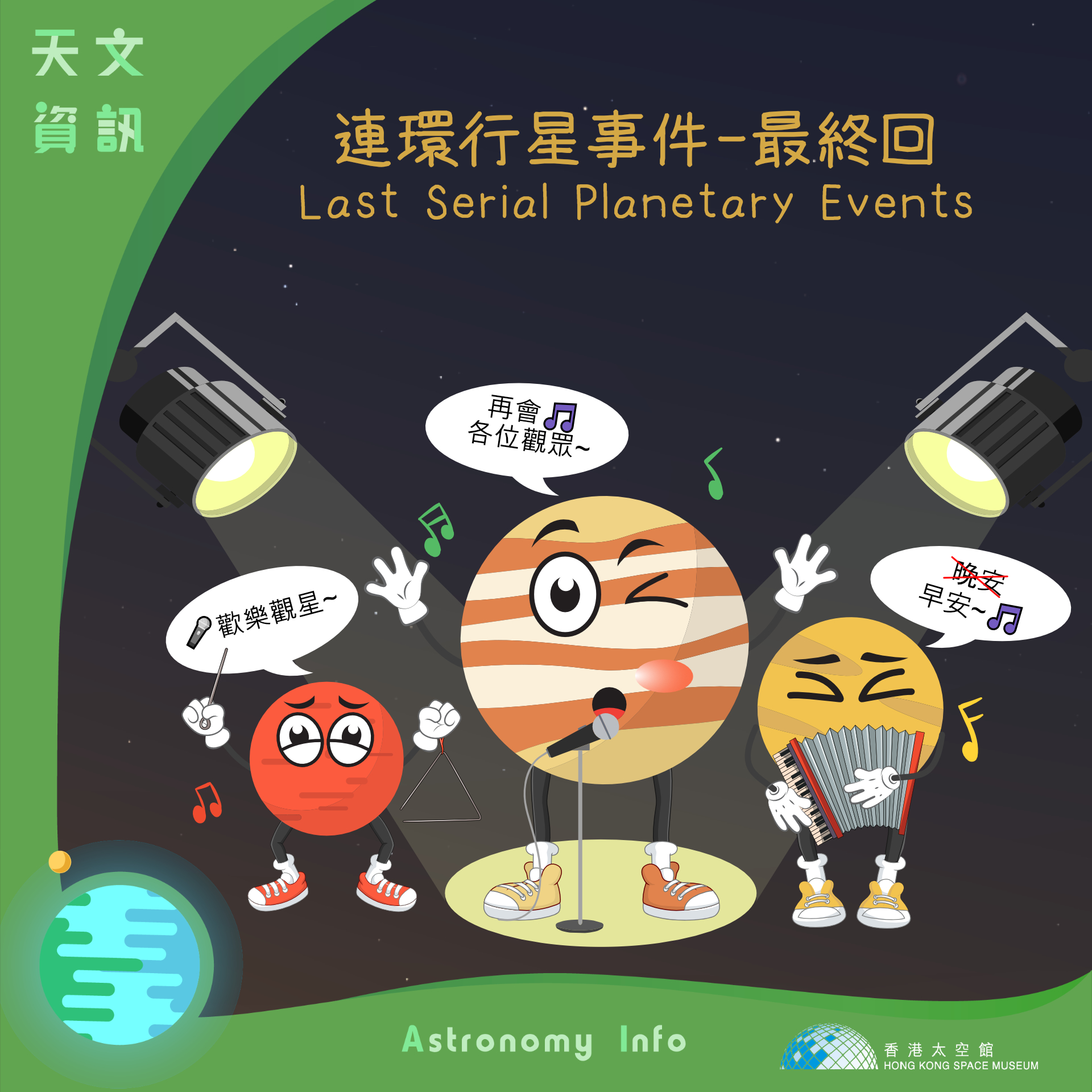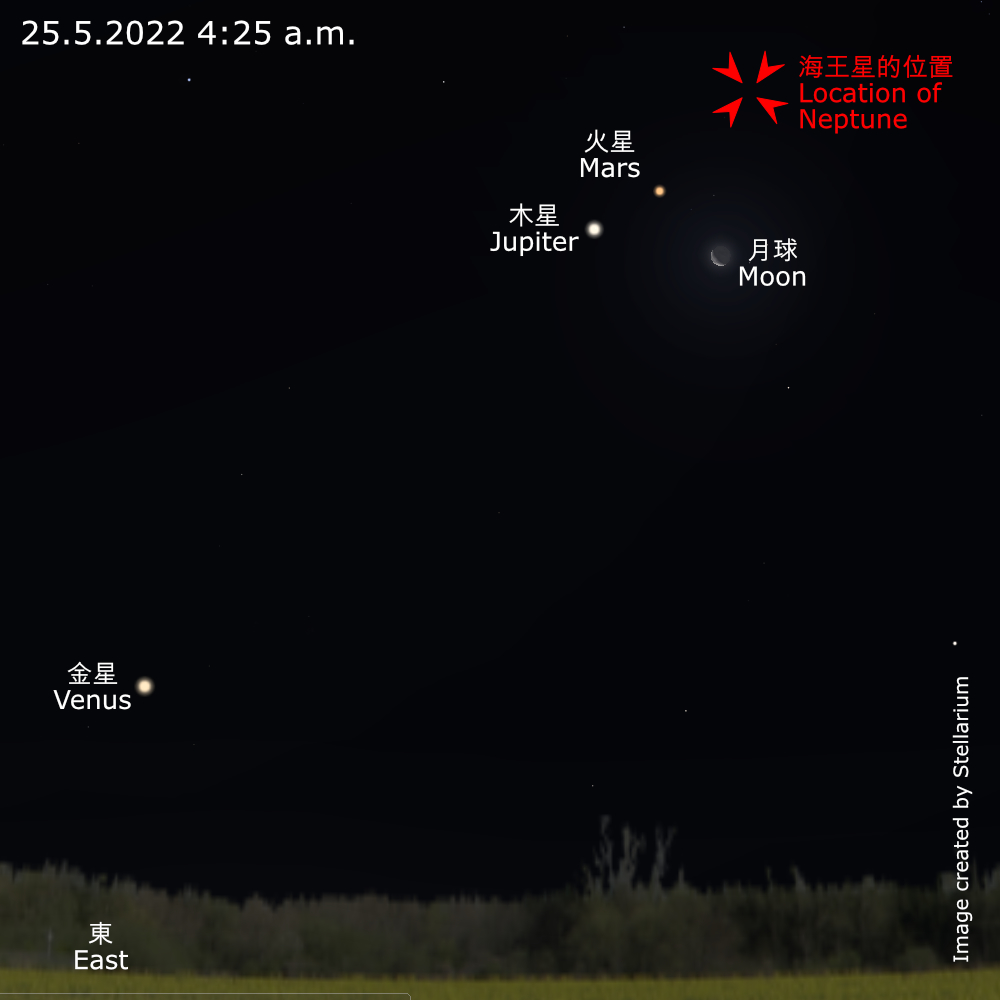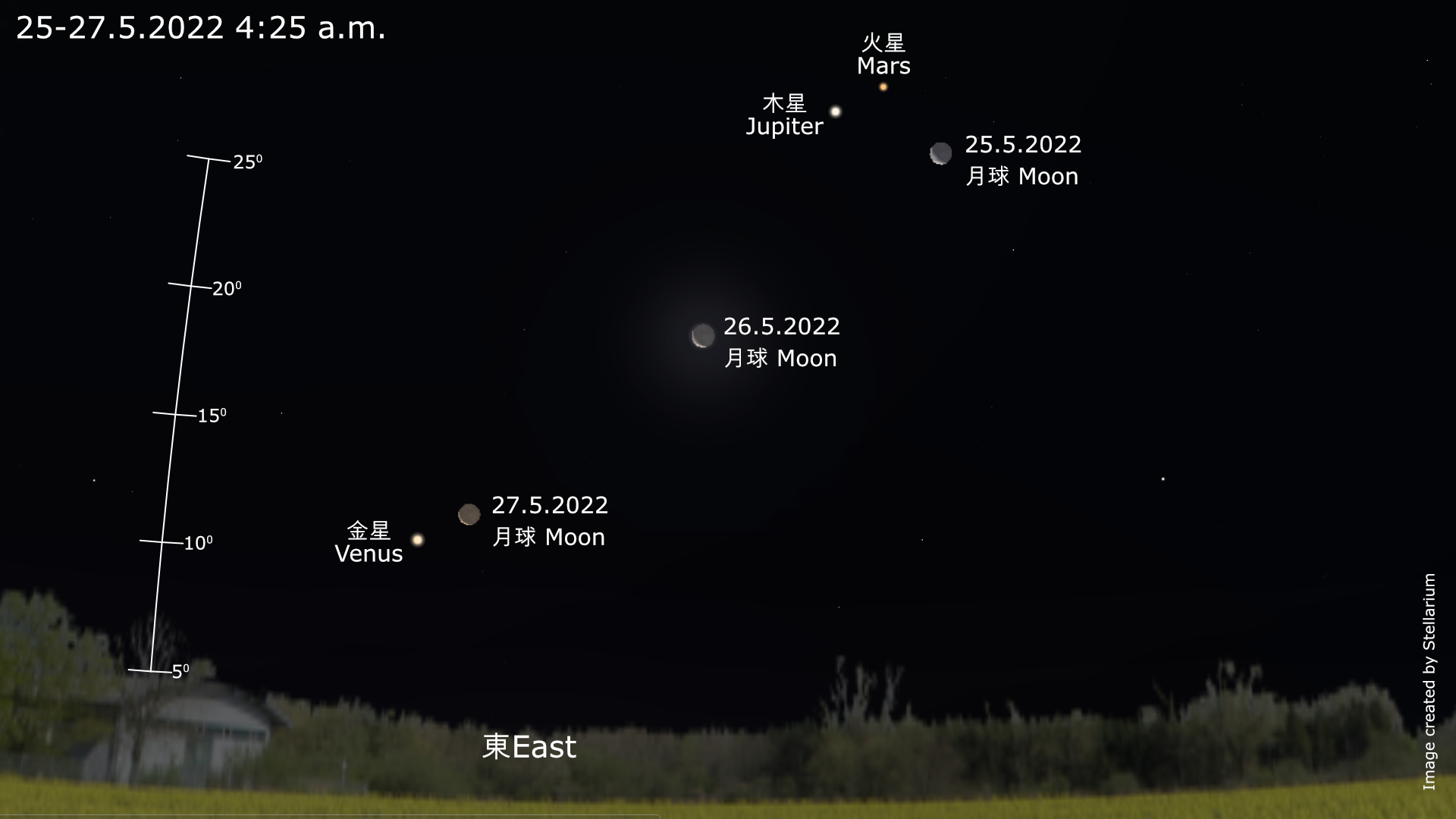Good weather was not with us so we had missed the first event "Planetary Trio with the Waning Cresent" in March and the "Planetary Quadruple with the Waning Crescent" in April. Are we always out of luck in the stargazing events😥…No way! Tomorrow is always a new day and hope is all around 💪🏻💪🏻💪🏻. Another "Planetary Trio with the Waning Cresent" will appear in a clear sky before sunrise from 25 – 27 May.
Three of the shining objects of this grand finale event, Mars, Jupiter and the waning crescent🌙 will set the stage at around 3:00 a.m. on 25 May. You can draw a triangle with the dimmer orange-red Mars (magnitude -0.7), the yellowish Jupiter (magnitude -2.2) and the Moon in the eastern sky before dawn. Being the last special "guest" in closing the serial planetary events, the brightest planet Venus (magnitude -4.0) will undoubtedly catch your eye. It will appear an hour after Mars, Jupiter and the Moon. The Moon rises around 50-70 minutes later each day. On 27 May, the Moon and Venus will appear in close proximity in the sky.
If you photograph the spectacular scenery of the "Planetary Trio with the Waning Crescent", please do share with us by commenting below this post!
Here are the observing tips:
👀 : the naked eye is all you need
📍: go to a site with an unobstructed view of the sky and horizon in the east to southeast direction. Suggested locations include Siu Sai Wan, Clear Water Bay, Sai Kung Waterfront Park, Tai Po Waterfront Park, etc.
🕠 : 3:00-5:00 a.m.
PS – An Enigma of the Serial Planetary Event
After the five planetary events, you may probably ask why only Venus, Mars, Jupiter and Saturn showed up but not the other three planets, Mercury, Neptune and Uranus? In fact, they did show up but they are harder to observe. Mercury is the inner planet closest to the Sun. It always appears close to the Sun when we observe from Earth. We can only see it close to the horizon in the sky at dusk or dawn. The apparent magnitude of Uranus is about 5.7 which almost reaches the limiting magnitude of the naked eye. Neptune is even fainter with an apparent magnitude 7.8 and can only be seen with a telescope.






